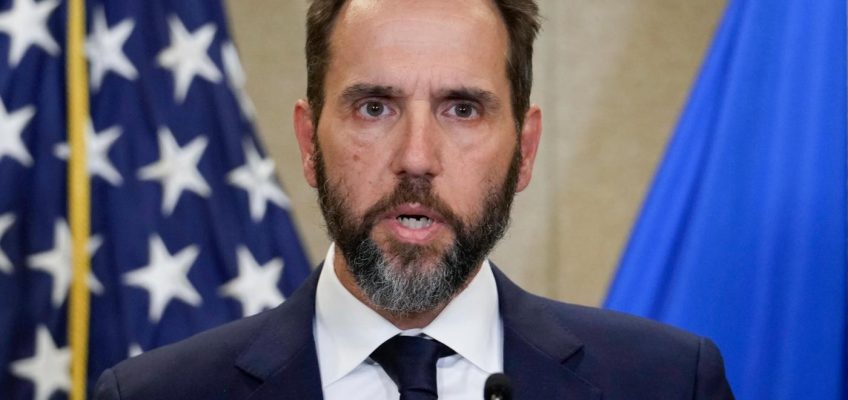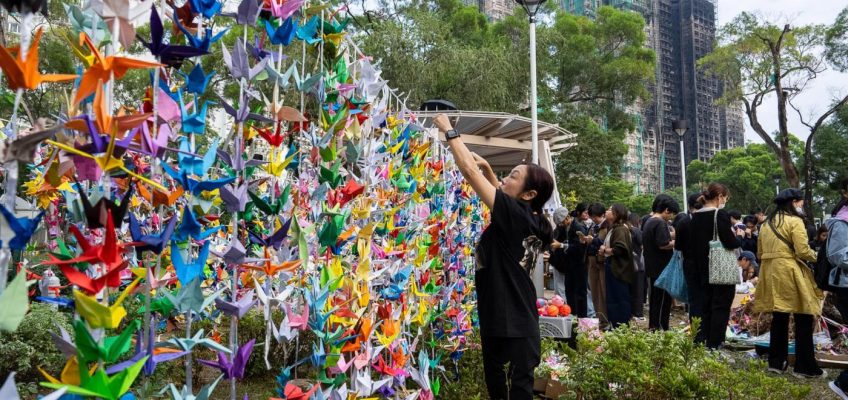By ERIC TUCKER, Associated Press
WASHINGTON (AP) — The Republican-led House Judiciary Committee has subpoenaed former Justice Department special counsel Jack Smith for a closed-door interview later this month even though he had earlier volunteered to appear for an open hearing about his prosecutions of President Donald Trump.
Rep. Jim Jordan of Ohio, the committee’s Republican chairman, directed Smith in a letter dated Wednesday to appear for a private deposition on Dec. 17 as part of the panel’s investigations into the prosecutor’s work.
“Due to your service as Special Counsel, the Committee believes that you possess information that is vital to its oversight of this matter,” Jordan wrote. He also asked Smith to produce records to the committee in addition to his testimony.
A lawyer for Smith, Peter Koski, said in a statement that Smith had offered nearly six weeks ago to appear before the committee in an open hearing but would nonetheless appear as requested for the deposition.
“We are disappointed that offer was rejected, and that the American people will be denied the opportunity to hear directly from Jack on these topics,” Koski said. “Jack looks forward to meeting with the committee later this month to discuss his work and clarify the various misconceptions about his investigation.”
Smith was appointed in 2022 to oversee the Justice Department investigations into Trump’s efforts to overturn his 2020 presidential election loss and his hoarding of classified documents at his Mar-a-Lago estate in Palm Beach, Florida. Smith’s team filed charges in both investigations.
Smith abandoned the cases after Trump was elected to the White House again last year, citing Justice Department legal opinions that prohibit the indictment of a sitting president.
Republicans who control Congress have sought interviews with members of Smith’s team and in recent weeks have seized on revelations that the team, as part of its investigation, had analyzed the phone records of select GOP lawmakers from on and around Jan. 6, 2021, when pro-Trump rioters stormed the U.S. Capitol to try to halt the certification of the Republican president’s election loss to Democrat Joe Biden.
Related Articles
Pentagon watchdog finds Hegseth’s use of Signal posed risk to US personnel, AP sources say
What to know about Somalia as Trump wants Somalis in the US to leave
What to know about the hepatitis B shot — and why Trump officials are targeting it
Trump will play a starring role heading into a big weekend at the Kennedy Center
Trump plans to weaken vehicle mileage rules that limit air pollution
Smith’s legal team has noted that the records that investigators obtained did not include the contents of the conversations but instead merely captured incoming and outgoing call numbers, the times the calls were placed and how long they lasted.
“Mr. Smith’s actions as Special Counsel were consistent with the decisions of a prosecutor who has devoted his career to following the facts and the law, without fear or favor and without regard for the political consequences,” Smith’s lawyers wrote to lawmakers in October.
“His investigative decisions were similarly motivated, and the subpoena for toll records was entirely proper, lawful, and consistent with established Department of Justice policy. While Mr. Smith’s prosecutions of President Trump have predictably been politicized by others, politics never influenced his decision making,” they added.
Follow the AP’s coverage of former Justice Department special counsel Jack Smith at https://apnews.com/hub/jack-smith.




